A brief visit to Oman
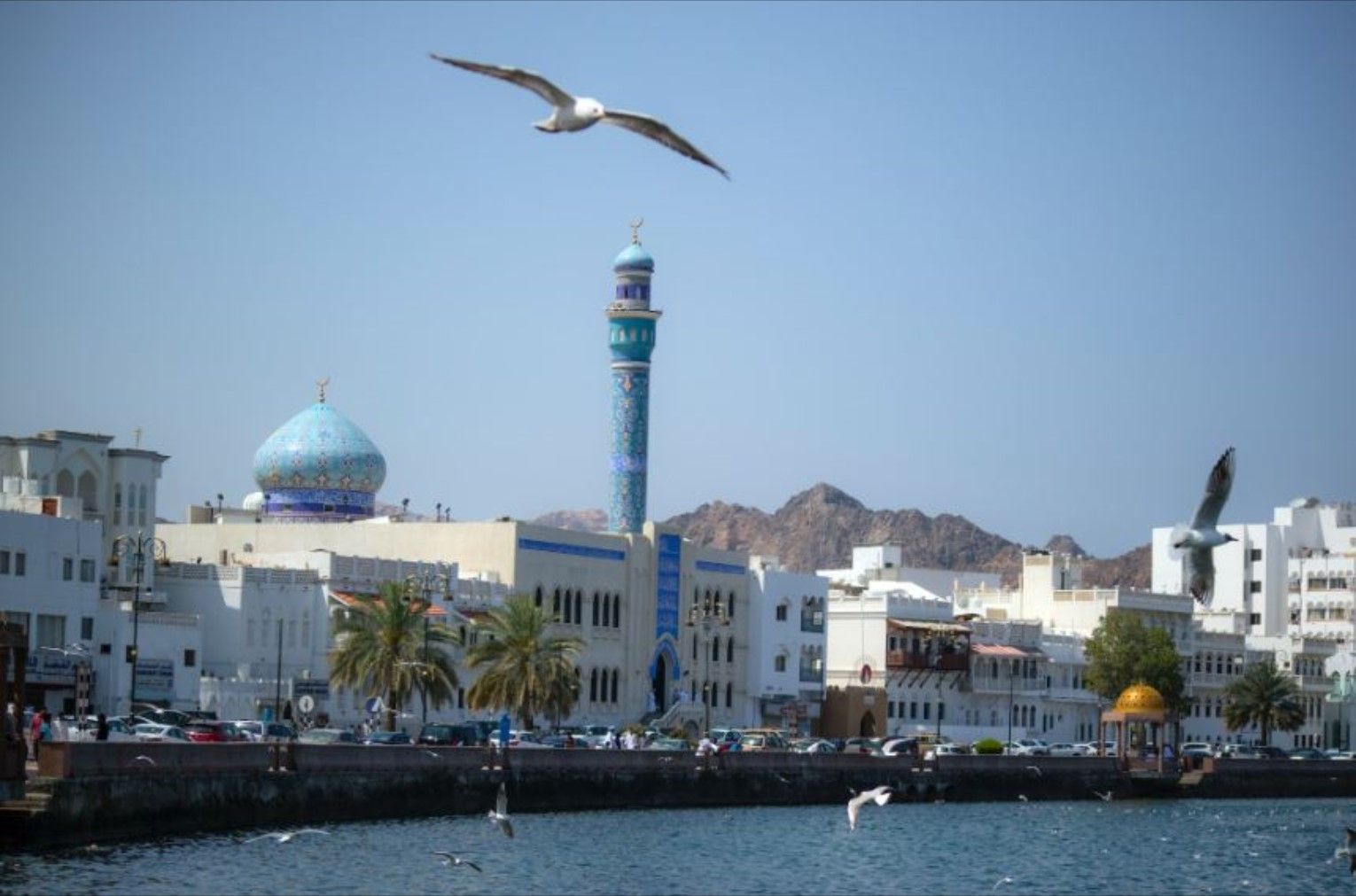
There is always a sense of mystery arriving in a new country at 4am - no traffic as the taxi sped through the streets, just the twinkling lights of buildings scattered about. It’s hot though around 35 degrees!
I’d arrived in Muscat the capital of Oman - it’s one of the few countries in the world where there is no terrorism. The men wear kumar hats and dress in pristine white almost-floor-length gowns known as dishdasha - it defines the country’s identity, so much so, the government has standardised the design to preserve Omani culture.
It was a fascination to me – their attire always spotless, even at the animal market! There’s a little tassel dangling from the collarless neck. An unpleasant smell? They just bring the tassel to their nose - it’s doused in perfume - usually frankincense.
Below:
A sea of men wearing dishdasha’s and kumar hats; map; Centre left: Sultan Qaboos ruled from 1970 until his death in 2020; Centre Middle: his agreed successor Sultan Haitham bin Tarim Al Said; Centre Right: selling frankincense - with the tassel attached to the dishdasha; women in varying dress, always with hair covered.
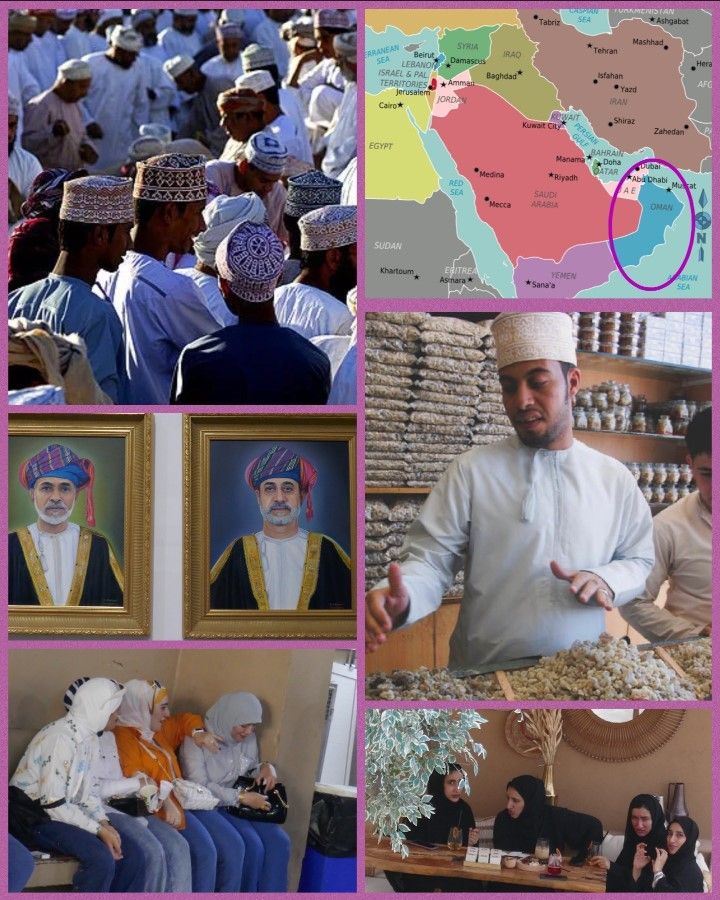
Remember the Three Wise Men? They carried precious frankincense - one of the most expensive gifts, offered not just to the newborn Jesus, but kings and royalty around the world. It was traded along the Great Silk Road and made the Nabatean’s rich. Sources may be declining around the world, but it’s grown right here in Oman and I saw it everywhere in the markets.
Oman is a Muslim country, be it a liberal one and offers religious freedom; women still wear the hijab - mainly black but other colours as well.
Oman has been ruled by the Omani Al Said Family since 1744. It was one of the most isolated and traditional countries in the Arab World, until the 1970s when Sultan Qaboos Al Said deposed his father in a bloodless coup, ruling for 70 years opening up the country and embarking on a policy of modernisation - abolishing slavery which had once been a key part of its trade.
Qaboos’s rule as an absolute monarch, used the country’s oil wealth to pull it out of poverty, children were educated, modern hospitals, roads and a port built, and many other facilities, all to improve living standards.
Internationally, as the longest-serving leader in the Arab world, he used Oman’s place in a turbulent region and strategic position next to one of the globe’s busiest shipping lanes, to become a discreet, diplomatic player. 1
We passed just one of the Royal Palaces - Al Alam Palace near the waterfront, during a city tour, striking with its colourful Islamic architecture; and his yacht, Al Said, moored in the harbour.
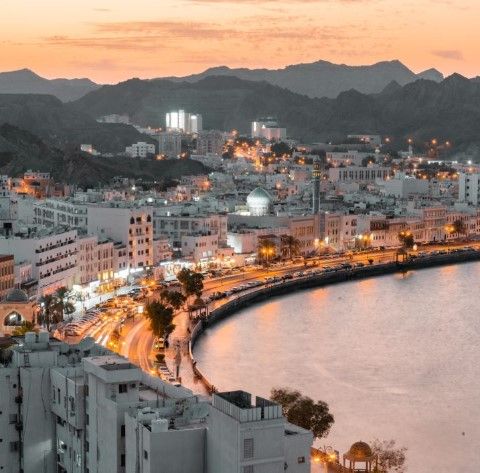
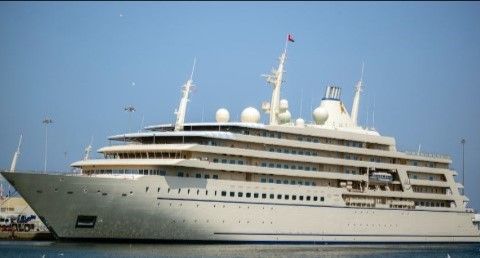
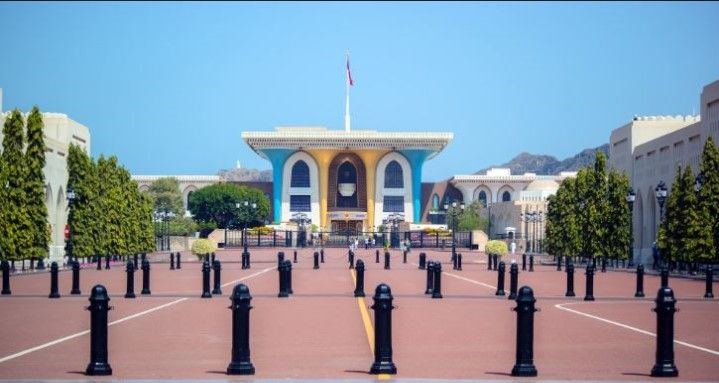
From the 17th century onwards, the Omani Sultanate was an empire and competed with the Portuguese and British for influence in the Persian Gulf and Indian Ocean. In the 19th century, Oman extended across the Straits of Hormuz to Iran and Pakistan and down the East African coast to Zanzibar.
Today the country is a much smaller. The rugged Al Hajar Mountains line the coast, a backdrop to the low rise, mainly white buildings of Muscat - heights restricted to around 10 floors - a refreshing change from the decadence of cities like Dubai.
During the ½ day city tour, we also visited the Sultan Qaboos Grand Mosque, with a capacity of 20,000, it’s Oman’s largest.
As it was a non-prayer day we were allowed to enter, suitably attired. The buildings and columns a mix of Omani, Islamic, and Middle-Eastern architectural styles. Inside majestic marble columns, a massive Persian carpet, but it’s the Swarovski chandelier, the 2nd largest in the world, that takes my breath away.
The marble for the paths sourced from the Omani mountains and in the grounds, a lush green garden filled with bright flowers.
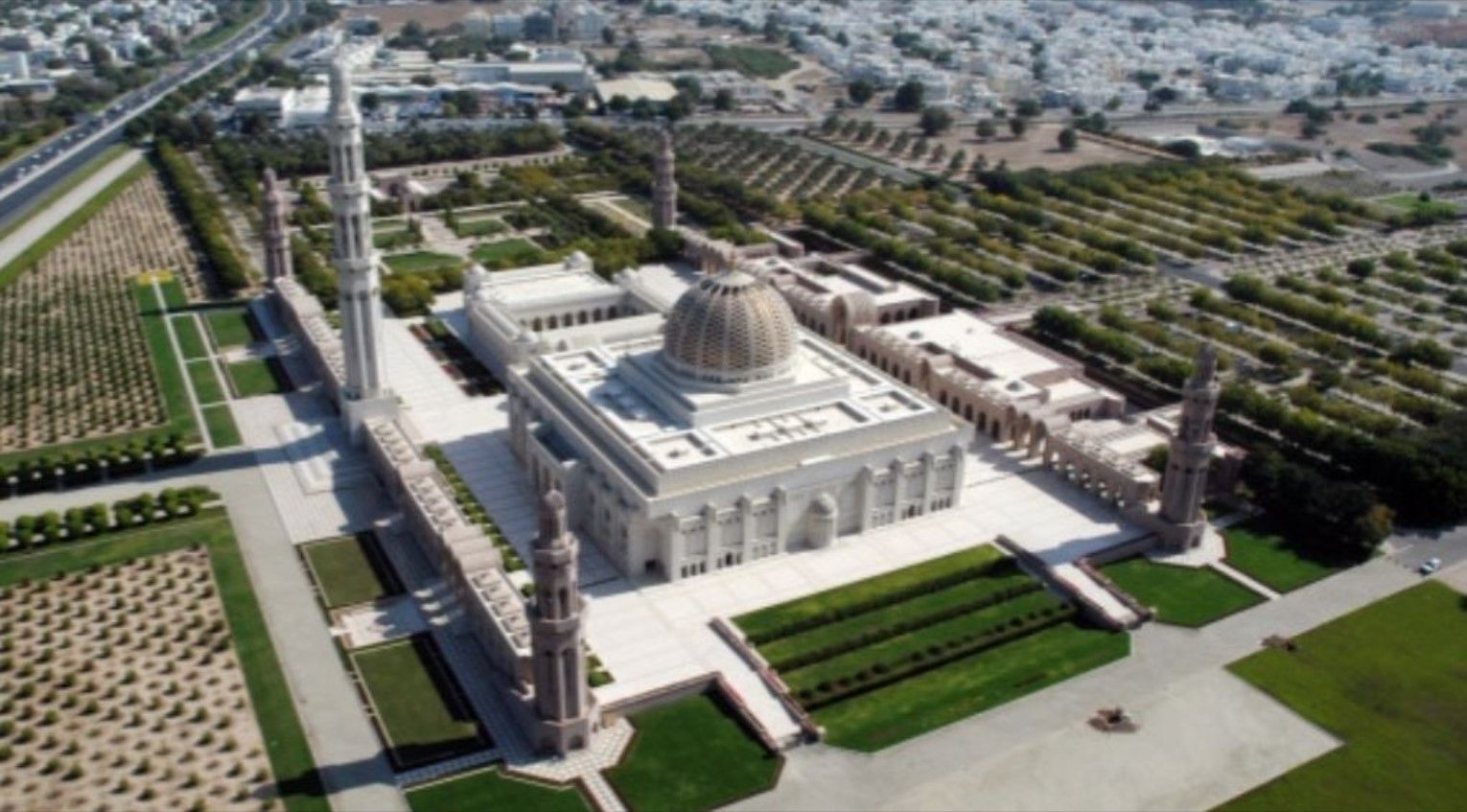
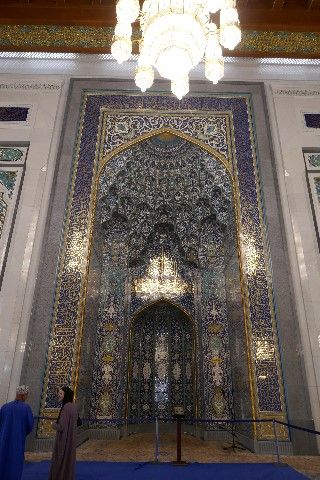
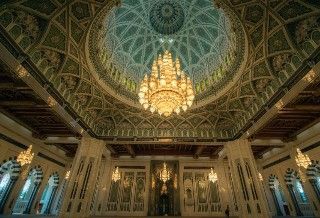
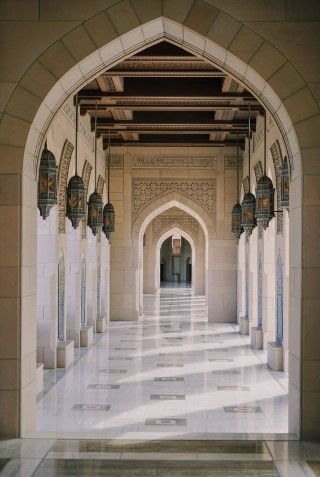
We called into the fish market - the produce fresh but still a fishy smell, enticing a little kitten. If we were wearing a dishdasha we'd lift that tassel to our noses.
We toured the Bait Al Zubair Museum which provided an overview of Oman’s history as well as small collections of ancient musical instruments, weapons, costumes, and household items. We were all happy to linger in the AC.
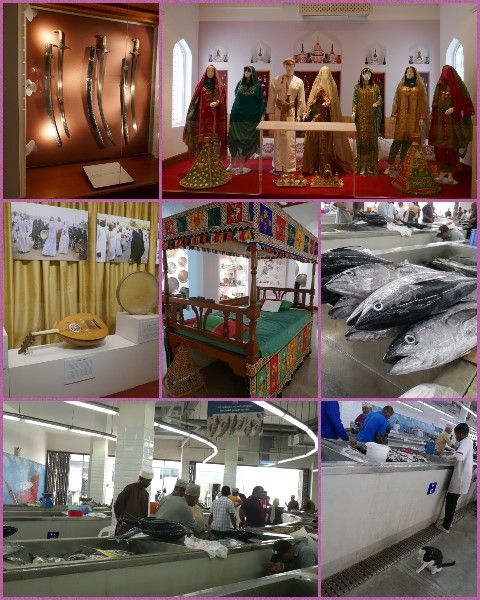
Every city in the Middle East has its souq and Muscat is no exception. I browsed the Mutrah Souq - the usual alleyways lined with stalls.
The usual cries from the traders - Rolex watch Sir, good copy and good price; madam - designer hand bags and silk scarfs - take a look - we offer best price… with a smile I said thank you, all very beautiful, but my suitcase is full. They weren’t too insistent, I loved the banter, the colourful goods and heady aromas of the spices. A fellow traveller was after a kumar, so at least one trader had a sale.
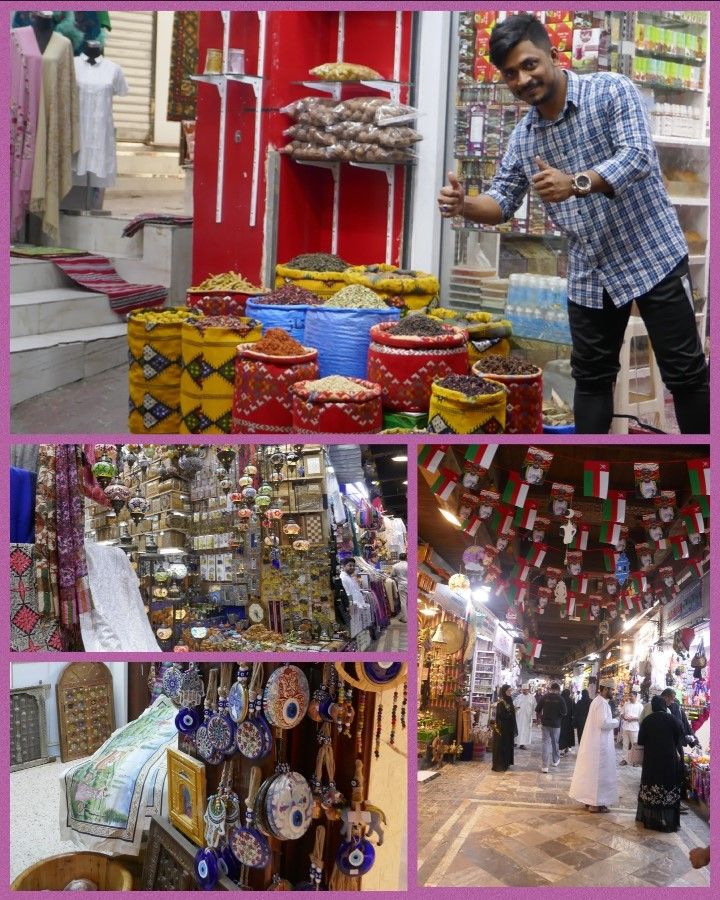
To discover a little more of Oman I decided to join a full day tour.
Abdullah, our competent and friendly guide took us to the animal market, goats and cattle galore, men in those pristine dishdasha’s, then the Nizwa Market, offering us a tasty array of juicy dates and a piece of halwa, considered the national dessert of the country.
Made with almonds and farina, caramelised sugar, rose water, saffron, butter and cardamon, it’s cooked in a very large copper pot, called mirjnl, for a couple of hours and requires constant stirring. Halwa is served at all sorts of gatherings, usually with coffee, and enjoyed at weddings, funerals, birthday celebrations and during Ramadan.
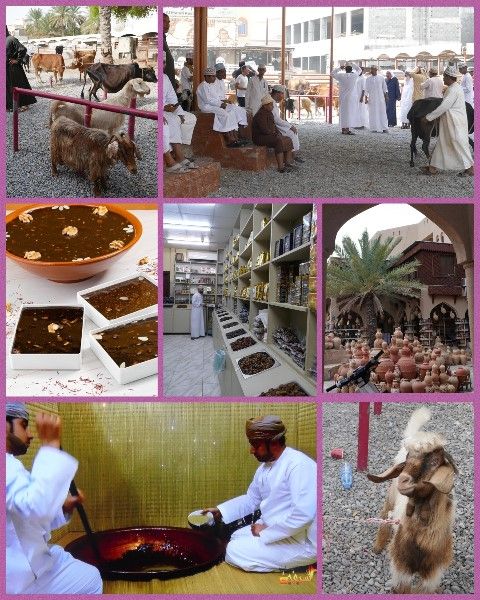
There are many forts in Oman - I visited one. Nizwa Fort is unique in Oman as its main tower has a cylindrical shape, which also happens to be the biggest tower in an Omani fort. With 7 wells, a number of prisons, and a prosecution ground, defence mechanisms in the main tower were the most interesting - enemies could fall through trap doors into dungeons, have boiling date syrup poured over them from hidden slots and if they happened to miss those, Omanis shot them down through ingenious vertical slots!
The oldest part of Nizwa Fort was originally constructed by Imam Al Sult bin Malik Al Kharusi in the 9th century, later renovated by Imam Sultan bin Saif Al Yarubi in the 17th century - his claim to fame was evicting the Portuguese from Oman!
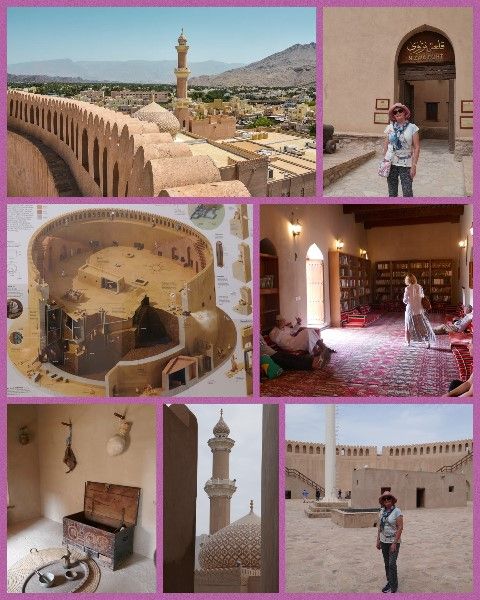
The highlight though was visiting, Bait Al Safah, the 300 year old home of a sheik in the ancient town of Al Hamra, located at the foot of the mountains. Ramshackle streets with broken stones about, this home is now a museum to provide tourists with a taste of Omani traditional ways of living.
The 2-storey house has walls ½ metre thick, keeping the rooms cool, additional mud added every few years to maintain the integrity of the structure; low windows and high ceilings the best ventilation in unforgiving heat.
Extended family share the house, it’s the same today. Grandparents, parents, children, even cousins - usually 20 or more residing in the same abode.
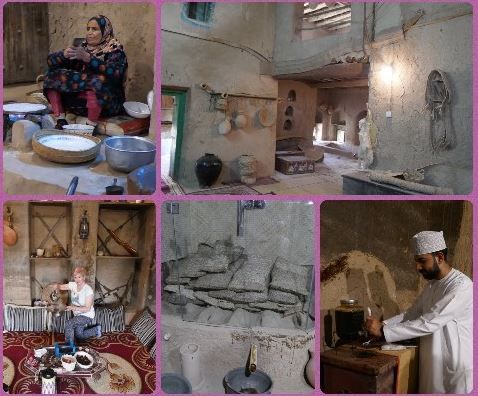
The upper floor of the Omani house - dining, reception rooms and sleeping quarters, while the lower level - kitchen and utility rooms; sacks of dates are stacked - the weight forcing syrup to drip into bowls, it tasted like molasses.
Our gracious hostess, demonstrated grinding wheat for bread making, oil extraction used as medicines and coffee bean roasting and inviting to partake in tea or coffee and sweet treats.
My visit to Oman was short, enjoying the main attractions, but mostly I'll remember the gracious Omani hospitality.
Credits:
1 Wikipedia
